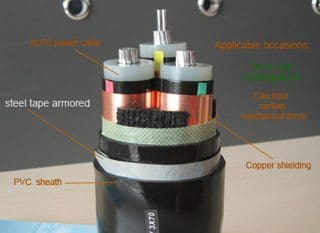
In urban areas, high voltage underground cables are commonly used for the transmission and distribution of electricity. Such high voltage cables have metallic sheaths or screens surrounding the conductors, and/or armour and metallic wires surrounding the cables.
During earth faults applied to directly earthed systems, these metallic paths are expected to carry a substantial proportion of the total fault current, which would otherwise flow through the general mass of earth, while returning to system neutrals. These alternative return paths must be considered when determining the extent of the grid potential rise at an electrical plant due to earth faults.
Without grounding, shields would operate at a potential considerably above ground. Thus, they would be hazardous to touch and would cause rapid degradation of the jacket or other material intervening between shield and ground. This is caused by the capacitive charging current of the cable insulation that is on the order of 1 mA/ft of conductor length.
This current normally flows, at power frequency, between the conductor and the earth electrode of the cable, normally the shield. In addition, the shield or metallic sheath provides a fault return path in the event of insulation failure, permitting rapid operation of the protection devices.
In order to reduce circulating current and electric potential difference between the sheathings of single core three-phase cables, the sheathing is grounded and bonded at one or both ends of the cables. If the cable is long, double bonding has to be carried out which leads to circulating currents and increased total power loss. Raising the sheath’s resistance, by decreasing its cross section and increasing its resistivity, can reduce this almost to the level of the core losses.
However, in case of an earth fault, a considerable portion of the fault current flows through the increased sheath resistance, creating much higher power in the sheaths than in the faulty core. A simple solution, a conductor rod buried into the soil above or under the cable can divert this power from the sheaths.
Cable Screen
1. Purpose of cable screen
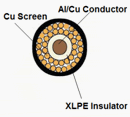
Cable screen controls the electric field stress in the cable insulation. It also provides return path for cable neutral and fault current.
If the screen is earthed at two ends than it provides shielding for electromagnetic radiation. Enclosing dangerous high voltage with earth potential for safety.
2. Purpose of bonding cable screens at both ends
The electric power losses in a cable circuit are dependent on the currents flowing in the metallic sheaths of the cables so by reducing the current flows in metallic sheath by different methods of bonding we can increases the load current carrying capacity (ampacity) of the cable.
It provides low impedance fault current return path and provides neutral point for the circuit. It also provides shielding of electromagnetic field.
3. Induced voltage & circulating circulating current in cable screen
Electromagnetic coupling between the core and screen Electromagnetic screen. If the cable screen is single point bonded, no electrical continuity and mmf generates a voltage. If the cable screen is bonded at both ends, the mmf will cause circulating current to flow if there is electrical continuity.
The circulating current produces an opposing magnetic field. Suitable bonding method should be employed to meet the standing voltage limit and keep circulating current to an acceptable level.
Laying Method Of Cable
The three Single core cables in a 3-phase circuit can be placed in different formations. Typical formations include trefoil (triangular) and flat formations.
1. Trefoil Formation

To minimize the electromechanical forces between the cables under short-circuit conditions, and to avoid eddy-current heating in nearby steelwork due to magnetic fields set up by load currents, the three single-core cables comprising the three phases of a 3-phase circuit are always run clamped in ‘Trefoil’ formation.
Advantages
This type of Formation minimizes the sheath circulating currents induced by the magnetic flux linking the cable conductors and metallic sheath or copper wire screens. This configuration is generally used for cables of lower voltages (33 to 132kV) and of smaller conductor sizes.
Disadvantages
The trefoil formation is not appropriate for heat dissipation because there is an appreciable mutual heating effect of the three cables. The cumulated heat in cables and cable trench has the effect of reducing the cable rating and accelerating the cable ageing.
2. Flat Formation

- This is a most common method for Laying LT Cable.
- This formation is appropriate for heat dissipation and to increase cable rating.
- The Formation choice is totally deepened on several factors like screen bonding method, conductor area and available space for installation.
Type of Core and Induced Voltage
1. Three Core Cable
- For LT application, typically for below 11 kV.
- Well balanced magnetic field from Three Phase.
- Induced voltages from three phases sum to zero along the entire length of the cable.
- Cable screen should be earthed at both ends
- Virtually zero induced voltage or circulating current under steady state operation.
2. Single Core Cable
- For HV application, typically for 11 kV and above.
- Single–core cables neglects the use of ferromagnetic material for screen, sheath and armoring.
- Induced voltage is mainly contributed by the core currents in its own phase and other two phases.If cables are laid in a compact and symmetrical formation, induced in the screen can be minimized.
- A suitable screen bonding method should be used for single–core cables to prevent Excessive circulating current, high induced standing voltage.igh voltage.
References
- Mitton Consulting.
- EMElectricals
Copyright Notice
This technical article is protected by U.S. and international copyright laws. Reproduction and distribution of PDF version of this technical article to websites such as Linkedin, Scribd, Facebook and others without written permission of the sponsor is illegal and strictly prohibited.© EEP-Electrical Engineering Portal.
Related electrical guides & articles
Premium Membership
Jignesh Parmar
Electrical Middle management professional having more than 22 years rich and dynamic experience in Project Execution / Project Management / Designing / Maintenance diversifies from Electrical Power Transmission (400KV/220KV/66KV)- Distribution(11KV/220V) to Lifts-HVAC-Ventilation-Fire Fighting-Fire Alarm-Lifts-CCTV-Stack Parking Works (High Rise Buildings, Townships, Shopping Complex, Commercial Complex, School, Temple).Profile: Jignesh Parmar


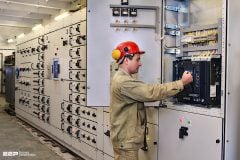
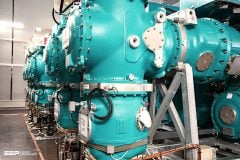
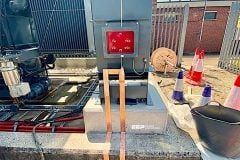
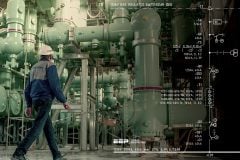


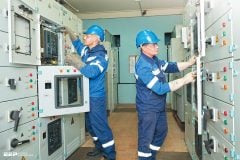


Sir,
I wanted to know that, In single core cable HV cable armour should be grounded at one end or both the ends. What is the standard for earthing armour at one end or both the ends.
Depth of cable laying depends on design profile in that area according to other utility services.
normally we can lay at a depth of 1.5 m direct buried for safety purpose. For road crossing we will lay inside HDPE pipe by Horizontal directional drilling. Some case maximum depth can reach 5-10 m at center of drilling.
we need to ensure any how fine dune sand with low thermal resistivity. low thermal resistivity rating of approximately 0.7Km/W, at 97% compaction of MDD and 0.0% percent moisture to be considered.
Sir I want to know at what maximum depth we can laid the HT cable. What are the issue on life of HT cable at maximum depth below the ground level.
Hi,
What if the copper screen damaged but still connected?
If we wrap another same thickness foil around it how it will react?
Will there be any reduced life expectancy or will it increases the cable burst chances?
Regards
Sumit
Is it okay to have single end earthing in the 11 kv single core cables of around 3.5 km length. What is the best method of earthing such cable, single end or both the end earthing.
I would like to know the formula of leaking current on the copper wire screen? For one cable (1×500sqmm) 22kv. How about spec of this leaking current?
Thank you very much!
Dear sir
What is reasons of HT cable 33KV puncture at cable terminal kits end , we faced such problem 3 times ,cables are laid in yr 2004 ,
132kV Cable laid from one station another station with 1.5 km distance, in this case, i need to Earth the shield one side or both side what is the reason.
Option 01-You need to earth both side of S/S by earth link box as well as introduce 02 joints with cross bonding link box at equal distance in between to minimize induced voltage.
Option 02-Both side Earth link box with Sigle point bonding arrangement by using Y/G cable from end to end but check induced voltage calculation as per your type of laying (like trough, direct buried,duct bank drilling etc.to be considered.
Dear Mr. Parmar,
I am a consultant for EHV cable networks. I would be happy to receive your advise on:
a) what should be the insulation on the earthing conductor, 6.6 kV or 3.3 kV will do.for a 132 kV
cable route.
b) The earthing conductor size can vary from 95 sq. mm to 400 sq. mm. It is normally copper.
What should be the optimum size.
c) are SVLs used in Link boxes available in higher ratings than 10kA.
will be obliged for your advise.
warm regards
rajendra bhat
+ 91 7709152955
sir i want to know how safe are the cables laid underground in front of my home by the mobile towers employees as the 11kv main line and transformer are near by my home????
Dear Sir,
Suppose if I am laying 132 KV HT cable and I want to introduce cable link boxes. What will be additional requirements to connect cable sheath link boxes. What sizes of connecting cables required?
After how much length of 132 KV cable 1 no. link box is advisable.
Please guide.
Regards,
Subhash Santani
I also want to know the answer. Please provide the answer. I am working as consultant in under cable HV system.
In case of flat formation, why continuous current rating of cable is reduced in both end bonding method as comparison to single point bonding method??
Very good information shared
Very informative and usefull. Thanks
I would like know how to calculate 500KV OHL tower earhting ( Combination of earht road and bar copper conductor/wire) in order to achieve required earth resistance.
Kindly provide me the detailed calculation.
very good